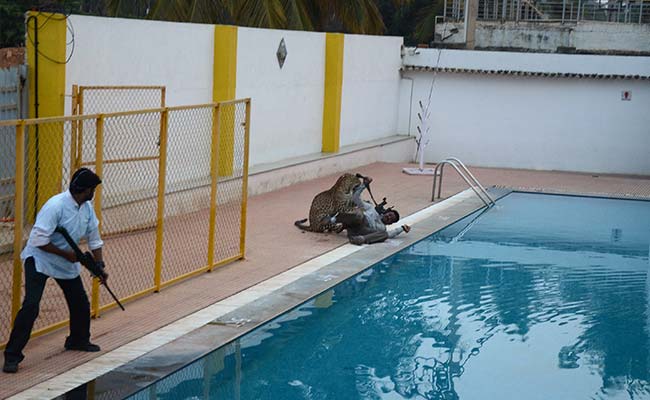
Quick Take
Summary is AI generated, newsroom reviewed.
What is it about us as a people that when we know a wild animal is on the prowl in our streets or our buildings we actually gather to gawk?
The person attacked most seriously was a biologist. He made several requests to authorities to make the capture of the leopard as easy as possible, both for the sake of the leopard and the forest officials who were on the spot. He asked that an ambulance and a fire engine be called. He asked the police to enforce Section 144 which bans a crowd from gathering, a precaution to keep the peace. He also asked for the swimming pool to be drained so that a groggy leopard would not fall in and drown after being tranquilized. The biologist, Sanjay Gubbi, was there on a request from the forest department to help with the leopard.

A security guard saw the big cat on the premises and raised the alarm a little after 4 am.
What is it about us as a people that when we know a wild animal is on the prowl in our streets or our buildings we actually gather to gawk? Invariably, it leads to the death of the animal because in panic, it attacks, the mob turns violent and the authorities do nothing.

At least 4 officials were injured during the operation.
The media is equally culpable. There is absolutely no need to be Johnny On The Spot with a camera. This makes the crowd more enthused and the authorities self-conscious. Not to mention endangering one's own safety. In a conflict situation with an animal, a dozen camera people running around only makes things worse. One can always get the shot after the animal is tranquilized. The other deplorable custom is to get shots while the animal comes to and is panicked and enraged in the cage. This causes them to repeatedly slam themselves against the bars on seeing us and the camera, which injures them badly.

After a day-long operation, the animal was tranquilised and captured in the evening.
What makes India extraordinary is the fact that we still have the leopard, the tiger, the lion. The only country in the world with all three. We still have mega fauna like elephants and bison and rhinos. We are one of 17 mega diverse countries of the world. Our roads, bridges, malls and towers don't make us unique, our wild heritage does. It is time we understood this.
(Swati Thiyagarajan is an Environment Editor with NDTV. She is at present writing a book "Born Wild", her show on NDTV, on her experiences with conservation and wildlife both in India and Africa, to be published by Bloomsbury.)
Disclaimer: The opinions expressed within this article are the personal opinions of the author. The facts and opinions appearing in the article do not reflect the views of NDTV and NDTV does not assume any responsibility or liability for the same.
Track Latest News Live on NDTV.com and get news updates from India and around the world

